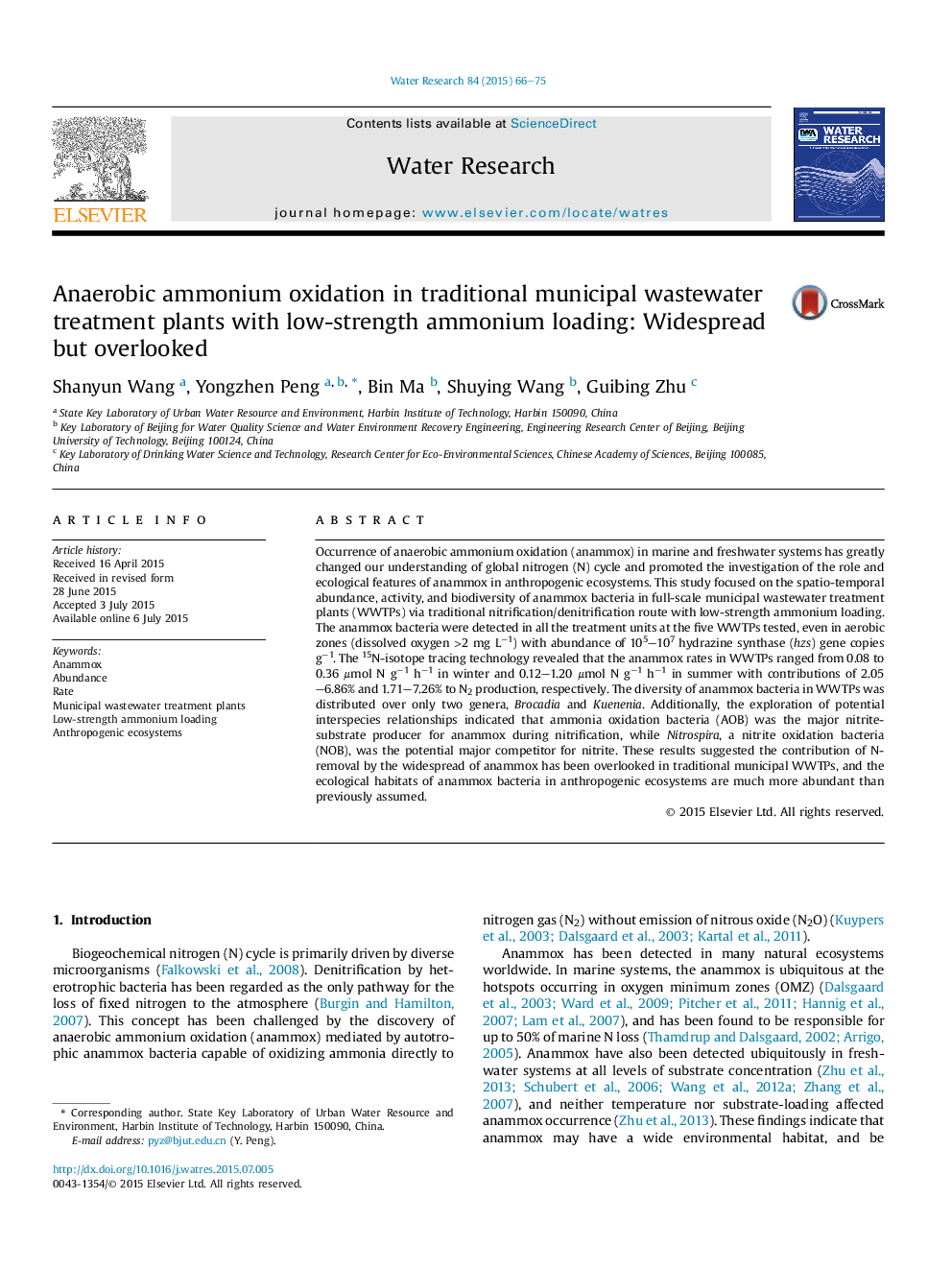| کد مقاله | کد نشریه | سال انتشار | مقاله انگلیسی | نسخه تمام متن |
|---|---|---|---|---|
| 4481074 | 1623084 | 2015 | 10 صفحه PDF | دانلود رایگان |
• The first report on the role of anammox in traditional WWTPs with low nitrogen loading.
• Anammox bacteria were widespread present with abundance of 105–107 copies g−1 MLVSS.
• Anammox rate was 0.08–1.20 μmol N g−1 MLVSS h−1 and contributed 1.7–7.3% to N-removal.
• Ammonia oxidation bacteria were the major nitrite producer for anammox in nitrification.
• Nitrospira was a potential major competitor with anammox bacteria in nitrification.
Occurrence of anaerobic ammonium oxidation (anammox) in marine and freshwater systems has greatly changed our understanding of global nitrogen (N) cycle and promoted the investigation of the role and ecological features of anammox in anthropogenic ecosystems. This study focused on the spatio-temporal abundance, activity, and biodiversity of anammox bacteria in full-scale municipal wastewater treatment plants (WWTPs) via traditional nitrification/denitrification route with low-strength ammonium loading. The anammox bacteria were detected in all the treatment units at the five WWTPs tested, even in aerobic zones (dissolved oxygen >2 mg L−1) with abundance of 105–107 hydrazine synthase (hzs) gene copies g−1. The 15N-isotope tracing technology revealed that the anammox rates in WWTPs ranged from 0.08 to 0.36 μmol N g−1 h−1 in winter and 0.12–1.20 μmol N g−1 h−1 in summer with contributions of 2.05–6.86% and 1.71–7.26% to N2 production, respectively. The diversity of anammox bacteria in WWTPs was distributed over only two genera, Brocadia and Kuenenia. Additionally, the exploration of potential interspecies relationships indicated that ammonia oxidation bacteria (AOB) was the major nitrite-substrate producer for anammox during nitrification, while Nitrospira, a nitrite oxidation bacteria (NOB), was the potential major competitor for nitrite. These results suggested the contribution of N-removal by the widespread of anammox has been overlooked in traditional municipal WWTPs, and the ecological habitats of anammox bacteria in anthropogenic ecosystems are much more abundant than previously assumed.
Figure optionsDownload high-quality image (343 K)Download as PowerPoint slide
Journal: Water Research - Volume 84, 1 November 2015, Pages 66–75
